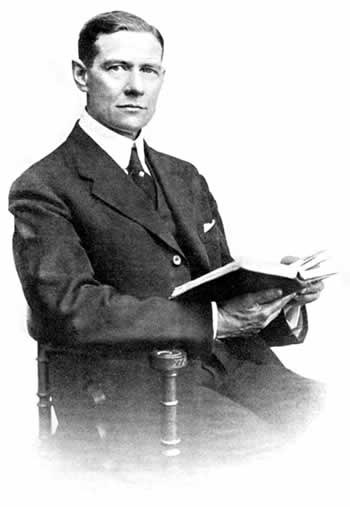Description
The Glory of the Cross Zwemer
DISCLAIMER NOTICE
This website does not endorse every comment and all sources quoted in this book. As you read through this book, please be aware of this. Many men of sound biblical repute are quoted, and some are quoted because of their experience in dealing with the Moslem religion – and not necessarily their relationship to GOD in salvation through the Blood of our Lord JESUS CHRIST.
THE GLORY OF THE CROSS
Samuel M. Zwemer
MARSHALL, MORGAN & SCOTT, LTD.
LONDON AND EDINBURGH
Copyright © 1938
by Samuel M. Zwemer
edited for 3BSB by Baptist Bible Believer in the spirit of the Colportage Ministry of a century ago
The Glory of the Cross Zwemer
Contents
PREFACE. 3
CHAPTER ONE “FIRST OF ALL . . . CHRIST DIED”. 7
CHAPTER TWO “WE DID NOT FOLLOW CUNNINGLY DEVISED FABLES” 19
CHAPTER THREE “AND THEY BLINDFOLDED HIM”. 29
CHAPTER FOUR “THEY BOUND HIM” … “AND THEY SPAT UPON HIM” 39
CHAPTER FIVE “THEY PARTED HIS GARMENTS AMONG THEM” 51
CHAPTER SIX “MY GOD, MY GOD, WHY HAST THOU FORSAKEN ME?” 61
CHAPTER SEVEN “BEHOLD THE LAMB OF GOD!”. 71
CHAPTER EIGHT “THEY . . . CRUCIFIED THE LORD OF GLORY” 82
CHAPTER NINE “HE SHOWED THEM HIS HANDS”. 96
CHAPTER TEN “THE POWER OF HIS RESURRECTION”. 106
The Glory of the Cross Zwemer
PREFACE
When the Portuguese traders, following the trail of the great explorer, Vasco da Gama, settled on the south coast of China, they built a massive Cathedral on a hill-crest overlooking the harbour. But a violent typhoon proved too severe, and three centuries ago the great building fell — all except the front wall. That ponderous facade has stood as an enduring monument, while high on its triangular top, clean cut against the sky, and defying rain, lightning and typhoon, is a great bronze cross. When Sir John Bowring, then governor of Hong Kong, visited Macao in 1825, he was so impressed by the scene that he wrote the famous hymn beginning : —
“In the Cross of CHRIST I glory,
Towering o’er the wrecks of time,
All the light of sacred story
Gathers round its head sublime.”
The builders of that ancient cathedral are forgotten, but the cross they reared in memory of the Crucified remains. China has seen stupendous changes, old institutions have crumbled and dynasties disappeared, but the Cross still stands. “A great ruined wall on a misty hill-top; birds nestling on its hideous gargoyles; the sea and the mountains and the sky of China seen through its gaping doors and windows; and over all the Cross, changing desolation to majesty.” So has it been in all lands and in all ages.
The missionary among Moslems (to whom the Cross of CHRIST is a stumbling-block and the atonement foolishness) is driven daily to deeper meditation on this mystery of redemption and to a stronger conviction that here is the very heart of our message and our mission. The secret of the missionary passion.
If the Cross of CHRIST is anything to the mind, it is surely everything — the most profound reality and the sublimest mystery. One comes to realize that literally all the wealth and glory of the Gospel centres here. The Cross is the pivot as well as the centre of New Testament thought. It is the exclusive mark of the Christian faith, the symbol of Christianity and its cynosure.
The more unbelievers deny its crucial character, the more do believers find in it the key to the mysteries of sin and suffering. We rediscover the apostolic emphasis on the Cross when we read the Gospel with Moslems. We find that although the offence of the Cross remains, its magnetic power is irresistible.
The following chapters are the result of meditations on the passion of our Lord and His Death on the Cross in the midst of men who deny the historicity of the crucifixion and the necessity of the atonement. But the Moslem is not alone in his denial. The message of the Cross has always been an outrage and a scandal, a superfluity of foolishness to the worldly-wise. Yet it is CHRIST on the Cross who will finally draw all men to Himself. Under the shadow of the Cross is rest and peace. The glory of the Cross is as real as its shame; and to meditate on the shame is to see the glory. The Cross interprets sin and righteousness and love. It is the power of GOD and the wisdom of GOD. Its shadow is the longest shadow in the world, because it fell even on the Resurrection morning. “He showed them His hands and His side.” Did He ever show them to you? Then were the disciples glad when they saw the scars of the Risen Lord. “But God forbid that I should glory, save in the cross of our Lord Jesus Christ, by whom the world is crucified unto me, and I unto the world” (Galatians 6:14).
“There was a knight of Bethlehem,
His wealth was tears and sorrows;
His men-at-arms were little lambs;
His trumpeters were sparrows.
His castle was a wooden cross
On which He hung on high;
His helmet was a crown of thorns
Whose crest did touch the sky.”
The Glory of the Cross Zwemer
SAMUEL M. ZWEMER
Samuel Marinus Zwemer, [1867-1952]
Samuel Zwemer was called to preach the Gospel to Muslims, and he is without doubt the greatest missionary to the Islamic world. On June 28, 1890, he began his mission, sailing from the United States on a Dutch liner the Obdam. Zwemer stopped in Europe to meet with other evangelical groups and then traveled to Beirut. Zwemer traveled throughout much of the Muslim world proclaiming the Gospel of Jesus including the Balkans, India, China, Africa, the Middle East. On June 28th, 1933, he ventured as far as China to bring the Gospel to the Chinese Muslims. Zwemer’s greatest feat was to visit Sana’a in Yemen, a place no lone westerner had ever gone before. He had many adventures in Arabia. In one incident, his life was spared when a Bedouin guide swore a great oath that Zwemer was neither an Englishman nor a government agent. In another incident, a group of Arabs debated whether, or not, they should hold him for ransom. These adversities did not deter Zwemer as he distributed Gospel literature throughout the Muslim world. Zwemer was dedicated to his mission of spreading the good news. He said: “No agency can penetrate Islam so deeply, abide so persistently, witness so daringly and influence so irresistibly as the printed page,”. The only thing that stopped Zwemer from distributing Arabic leaflets and Bibles was confiscation. He dedicated his life to preaching the Gospel to the Muslims and the created an awareness of the spiritual needs of Muslims in the West. Samuel Zwemer set up presses which printed many books – both to educate Westerners about the spiritual needs of Muslims, and Arabic language books to educate Muslims about Christ. He authored or co-authored at least 48 books in English. “He lived, breathed and thought of one thing alone: cracking open the Moslem world for Christ…. Zwemer penetrated Islam, but the great work he began remains unfulfilled to this day.” (More information of Samuel Zwemer) Samuel Zwemer was named Professor of Missions and Professor of the History of Religion at the Princeton Theological Seminary in 1929.
The Glory of the Cross Zwemer
CHAPTER ONE “FIRST OF ALL . . . CHRIST DIED” The Glory of the Cross Zwemer
“As there is only One GOD so there can be only one Gospel. If GOD has really done something in CHRIST on which the salvation of the world depends, and if He has made it known, then it is a Christian duty to be intolerant of everything which ignores, denies, or explains it away. The man who perverts it is the worst enemy of GOD and men; and it is not bad temper or narrowmindedness in Paul which explains this vehement language (Galatians 1:8), it is the jealousy of GOD which has kindled in a soul redeemed by the death of CHRIST a corresponding jealousy for the Saviour. Intolerance like this is an essential element in the true religion. Intolerance in this sense has its counterpart in comprehension; it is when we have the only Gospel, and not till then, that we have the Gospel for all.” — James Denney in The Death of CHRIST.
“I delivered unto you first of all,” says Paul in the First Epistle to the Corinthian Church, “that which I also received, that Christ died for our sins, according to the Scriptures” (I Corinthians 15:3). The attentive reader will note from the context (as Dr. Moffatt does most emphatically show) that this is the heart of Paul’s message, the centre of his teaching, his one and only Gospel. In this passage and its context, the word Gospel is repeated four times in introducing the statement of what the good news really is. Paul says he received it not primarily and only from members of the primitive Church, but by direct revelation: “But when it pleased God, who separated me from my mothers womb, and called me by his grace, To reveal his Son in me, that I might preach him among the heathen; immediately I conferred not with flesh and blood: Neither went I up to Jerusalem to them which were apostles before me; but I went into Arabia, and returned again unto Damascus. Then after three years I went up to Jerusalem to see Peter, and abode with him fifteen days. But other of the apostles saw I none, save James the Lords brother” (Galatians 1:15-19).
That Church, therefore, as well as Paul himself, believed that the first and fundamental truth of Christianity was the death of CHRIST for our sins; and Paul must have received and taught this truth within seven years — according to other chronologies, within even a shorter period — after the death of JESuS.
The death of CHRIST on the Cross is to Paul of the first importance and the weightiest article of his faith. It is fundamental. It is the keystone of the arch, the cornerstone of the temple of truth.
That this is true is evident from the place the death of CHRIST occupies in the Scriptures, in the apostolic message, in the two ordinances as administered by the Church, and in the earliest as well as the latest Christian hymnody. The evidence is cumulative and overwhelming. The Cross is not only the universal symbol of Christianity, it is its universal and unmistakable message. It is the very heart of the Gospel — the word quick and powerful, sharper than a two-edged sword; for nothing convicts of sin like the Cross.
There we can see “our secret sins in the light of His countenance” whose eyes are as a flame of fire. Listen to Bishop Lancelot Andrewes as he pours out his heart in private devotion before the Cross: -
“Thou who didst deign that
Thy glorious head should be wounded:
Forgive thereby whatsoever by the senses of my head I have sinned;
That Thy holy hands should be pierced:
Forgive thereby whatever I have done amiss
By unlawful touch, or unlawful act;
That Thy precious side should be opened:
Forgive thereby whatever I have offended
By lawless thoughts in the ardour of passion;
That Thy blessed feet should be riven:
Forgive thereby whatever I have done
By the means of feet swift to evil;
That Thy whole body should be extended:
Forgive thereby whatever iniquity I have committed
By the help of any of my members.
And I too, O Lord, am wounded in soul;
Behold the multitude, the length, the breadth, the depth of my wounds;
And by Thine heal mine.”
The Cross of CHRIST is the searchlight of GOD.
It reveals GOD’s love and man’s sin;
GOD’s power and man’s helplessness,
GOD’s holiness and man’s pollution.
The Glory of the Cross Zwemer
As the altar and propitiation are “first of all” in the Old Testament, so the Cross and the Atonement are “first of all” in the New. There is a straight line from every point in the circumference of a circle to the centre. So the Old Testament and the New Testament doctrine of salvation in all its wide circumference and with all it includes of a new heart and a new society, and a new Heaven and a new earth, leads back in a straight line to the centre of all — The Lamb that was slain before the foundation of the world.
Consider the place the story of the Crucifixion occupies in the New Testament. It is mentioned in every book save in three short Epistles, Philemon and the Second and Third of John.
The synoptic Gospels devote more space proportionately to it than to any other aspect of CHRIST’s life or teaching.
Matthew (not to speak of the many passages where CHRIST’s death is foretold) relates the tragedy in two long chapters of one hundred and forty-one verses.
Mark gives one hundred and nineteen verses to the story; two chapters and they are the longest out of sixteen.
Luke also devotes two long chapters to describe the arrest and crucifixion.
Nearly one half of John’s Gospel deals with Passion week.
In the Book of Acts all the preaching centres in the death and resurrection of our Lord. This is the Good News of the Gospel. “To whom also he showed himself alive after his passion by many infallible proofs, being seen of them forty days, and speaking of the things pertaining to the kingdom of God” (i. 3). The climax of Peter’s sermon at Pentecost was JESUS “Him, being delivered by the determinate counsel and foreknowledge of God, ye have taken, and by wicked hands have crucified and slain” (Acts 2:23), crucified and slain “by wicked hands.” “Therefore let all the house of Israel know assuredly, that God hath made that same Jesus, whom ye have crucified, both Lord and Christ” (2:36). Again, in the temple, Peter has the same message: “But ye denied the Holy One and the Just, and desired a murderer to be granted unto you; And killed the Prince of life, whom God hath raised from the dead; whereof we are witnesses” (Acts 3:14-15).
The Glory of the Cross Zwemer
“All the prophets,” Peter claims, “showed . . . that Christ should suffer,” but “Unto you first God, having raised up his Son Jesus, sent him to bless you, in turning away every one of you from his iniquities” (3:18, 26). The next day he came back to the theme, “Jesus Christ of Nazareth, whom ye crucified” (4:10). In the first ritual prayer of the early Church: “For of a truth against thy holy child Jesus, whom thou hast anointed, both Herod, and Pontius Pilate, with the Gentiles, and the people of Israel, were gathered together” (4:27) there is again reference to the passion and death of “Thy holy child Jesus.”
The result of such a message is expressed in words that leave no doubt as to its content: “Saying, Did not we straitly command you that ye should not teach in this name? and, behold, ye have filled Jerusalem with your doctrine, and intend to bring this mans blood upon us” (5:28).
But the apostles answered, “The God of our fathers raised up Jesus, whom ye slew and hanged on a tree. Him hath God exalted with his right hand to be a Prince and a Saviour, for to give repentance to Israel, and forgiveness of sins” (5:29).
The Glory of the Cross Zwemer
Stephen’s defence had for its peroration the death of JESUS; followed by his own swift martyrdom: “Ye stiffnecked and uncircumcised in heart and ears, ye do always resist the Holy Ghost: as your fathers did, so do ye. Which of the prophets have not your fathers persecuted? and they have slain them which showed before of the coming of the Just One; of whom ye have been now the betrayers and murderers: Who have received the law by the disposition of angels, and have not kept it. When they heard these things, they were cut to the heart, and they gnashed on him with their teeth” (7:51-54).
Philip opened his mouth and, from Isaiah 53, he preached the death of CHRIST to the Ethiopian eunuch as the good tidings: “Then Philip opened his mouth, and began at the same scripture, and preached unto him Jesus” (8:35).
Cornelius received the same message about One “Him God raised up the third day, and showed him openly” (10:40).
Paul at Antioch tells of JESUS “And though they found no cause of death in him, yet desired they Pilate that he should be slain. And when they had fulfilled all that was written of him, they took him down from the tree, and laid him in a sepulchre” (Acts 13:28-29).
At Thessalonica for three sabbaths Paul reasoned from the Old Testament Scriptures “Opening and alleging, that Christ must needs have suffered, and risen again from the dead; and that this Jesus, whom I preach unto you, is Christ (17:3).
At Athens he preached the death and resurrection of CHRIST: “Because he hath appointed a day, in the which he will judge the world in righteousness by that man whom he hath ordained; whereof he hath given assurance unto all men, in that he hath raised him from the dead” (17:31); at Corinth he said: “For I determined not to know any thing among you, save Jesus Christ, and him crucified.”
The Glory of the Cross Zwemer
He uses as synonyms for the Gospel, “the preaching of the Cross” (I Corinthians 1:18) or “the word of reconciliation” (II Corinthians 5:19).
Festus describes Paul’s message as being concerned about “. . . one Jesus, which was dead, whom Paul affirmed to be alive” (Acts 25:19). In his defence before Festus, Paul says that he has no other message, “Having therefore obtained help of God, I continue unto this day, witnessing both to small and great, saying none other things than those which the prophets and Moses did say should come: That Christ should suffer, and that he should be the first that should rise from the dead, and should show light unto the people, and to the Gentiles” (26:22-23).
In the Epistles of Paul we are embarrassed by the wealth of evidence and the abundance of proof that his one message was the Cross and the Atonement. He had been preaching the Good news for fifteen years before any of his New Testament Epistles were written. We cannot discover any change of emphasis between the earliest and the latest Epistle in this respect.
It is the heart of his message to the Romans as to the Thessalonians.
To the Galatian Church he mentions in his prologue that “Jesus Christ gave himself for our sins,” and (after a few sentences) he bursts out with indignation: “Though we, or an angel from heaven preach any other gospel unto you than that which we have preached unto you, let him be accursed” (Galatians 1:8).
That Calvary and not Bethlehem is the focus of Paul’s Gospel is evident from all his Epistles. The incarnation was in order that there might be an atonement. The Cross is supreme and crucial to GOD, to man, and to the universe.
“When we were yet sinners, Christ died for us.” “Who is he that condemneth? It is Christ that died.” “We preach Christ crucified . . . because the foolishness of God is wiser than men, and the weakness of God is stronger than men.” “The Church of God purchased by his own blood.”
All Christians when they drink the Cup are “to proclaim the Lord’s death till He come.” “But God forbid that I should glory, save in the cross of our Lord Jesus Christ, by whom the world is crucified unto me, and I unto the world” (Galatians 6:14).
The Glory of the Cross Zwemer
CHRIST is the beloved in whom we have our redemption through his blood. This is the mystery of the ages, the manifold wisdom of GOD, and revealed to principalities and powers through the Church.
Those who are “the enemies of the Cross of Christ,” Paul tells us with tears, glory in their shame and their end is perdition. In all things CHRIST must have the pre-eminence because He is our redemption and the forgiveness of our sins (Colossians 1:18) through the blood of His Cross.
The Cross is the centre of the universe and of history. It will yet witness the reconciliation of all things upon the earth or things in the heavens through His blood: “And, having made peace through the blood of his cross, by him to reconcile all things unto himself; by him, I say, whether they be things in earth, or things in heaven” (Colossians 1:20).
In the Epistle to the Hebrews the death of CHRIST (Himself the priest, the victim and the altar) is so prominent that we need give no references.
He is the great HIGH PRIEST “For then must he often have suffered since the foundation of the world: but now once in the end of the world hath he appeared to put away sin by the sacrifice of himself”
The blood of JESUS is the blood of the covenant.
The Glory of the Cross Zwemer
JESUS is the AUTHOR and FINISHER of our faith because He endured the Cross. His blood of sprinkling speaketh better things than that of Abel — it is the blood of an eternal covenant, shed by the great SHEPHERD of the sheep.
Peter’s Epistles echo his earliest preaching and are full of references to the sufferings of CHRIST “who his own self bare our sins in his body on the tree … by whose stripes we are healed” (I
Peter 2:24).
Finally, in John’s Epistle and in the Revelation the Cross is still supreme. Through it JESUS CHRIST is “And he is the propitiation for our sins: and not for ours only, but also for the sins of the whole world” (I John 2:2). “Hereby perceive we the love of God, because he laid down his life for us: and we ought to lay down our lives for the brethren” (I John 3:16).
“And from Jesus Christ, who is the faithful witness, and the first begotten of the dead, and the prince of the kings of the earth. Unto him that loved us, and washed us from our sins in his own blood” (Revelation 1:5). “Behold, he cometh with clouds; and every eye shall see him, and they also which pierced him: and all kindreds of the earth shall wail because of him. Even so, Amen” (Revelation 1:7).
The Glory of the Cross Zwemer
The two ordinances Church both have direct reference to the death of CHRIST for our sins. This is evident not only from the words of their institution in the New Testament but from the many liturgies used in their administration. Here, again, we may say that “first of all” they teach CHRIST’s atoning death. Baptism is the rite of initiation into the Christian Church. The New Testament nowhere speaks of unbaptized Christians, and these primitive believers knew what Paul meant when he said that all those “who were baptized were baptized into his death.”
The remission of sins and baptism were closely associated in their minds with the water and the blood that flowed from CHRIST’s riven side — not from the water in a baptismal tub. Both ordinances were intended to convey the message of the Gospel in unmistakable symbolism. As long as they hold their place in the Church, they are, in spite of all that has been added by ritual and superstition, a witness to the saving significance of CHRIST’s death, its vicarious nature, its necessity, and its crucial character. The early Church “continued steadfastly . . . in the breaking of bread” (Acts 2:42) because by it they desired to proclaim CHRIST’s death and the forgiveness of sins through His blood. It is the communion of His body and blood: “The cup of blessing which we bless, is it not the communion of the blood of Christ? The bread which we break, is it not the communion of the body of Christ?” (I Corinthians 10:16), the sharing of His SPIRIT: “For by one Spirit are we all baptized into one body, whether we be Jews or Gentiles, whether we be bond or free; and have been all made to drink into one Spirit” (I Corinthians 12:13), the remission of sins: “For this is my blood of the new testament, which is shed for many for the remission of sins” (Matthew 26:28), the blotting out of debts: “Blotting out the handwriting of ordinances that was against us, which was contrary to us, and took it out of the way, nailing it to his cross” (Colossians 2:14), the cleansing of all stains: “How much more shall the blood of Christ, who through the eternal Spirit offered himself without spot to God, purge your conscience from dead works to serve the living God?” (Hebrews 9:14). This made the breaking of bread so precious to the early Church and to all the Churches for nineteen centuries.
The Glory of the Cross Zwemer
When we turn from liturgy to hymnology we have the same testimony. In the earliest Latin and Greek hymns, in those of the Coptic and Armenian Churches, as well as in those of the Churches of the Reformation, the Cross is “first of all,” and the passion of our Lord the inspiration. It is in the hymns of the Church that we find a unity and a depth of theology that is sometimes absent even in the creeds.
“Worthy is the Lamb that hath been slain to receive power and riches and wisdom and might and honour and glory and blessing.” The Lamb is in the midst of the throne. Every created thing joins in the Hallelujah Chorus.
Little children in many lands and languages sing the very heart of the Gospel: —
“JESUS loves me, He who died
Heaven’s gate to open wide.
He will wash away my sin,
Let His little child come in.”
It is the same message that the great mystic, Bernard, put in glorious lines: —
“Properter mortem quam tulisti
Quando pro me defecisti
Cordis mei cor dilectum
In te meum fer affectum.”
What a large proportion of the hymns of the Church are passion hymns or an interpretation of the atonement made on the Cross! Who can forget the rendering into so many languages of “O haupt voll Blut and Wunden” or the pathos of its melody as sung by German Christians? The Stabat Mater Delorosa belongs not to the Latin Church but to all true believers who have stood beside Mary at the Cross.
“Just as I am without one plea,”
“When I survey the wondrous Cross,”
“There is a fountain filled with blood,”
“Rock of ages cleft for me,”
— and many others familiar to us all, make CHRIST’s death the great theme.
“JESUS paid it all,”
“What can wash away my sin?
Nothing but the blood of JESUS.”
“Nothing in my hand I bring,
Simply to Thy Cross I cling;
Naked come to Thee for dress,
Helpless look to Thee for grace;
For I to the fountain fly,
Wash me, Saviour, or I die.”
The Glory of the Cross Zwemer
If JESUS of Nazareth were merely man and not, as He is, the Son of GOD and our Saviour, His tragic death would still be the greatest event in human history.
The wealth of detail given in the contemporaneous records of His suffering and crucifixion; the dreadful accompaniments in the realm of nature; the seven words from the Cross; the effect on those who saw it and on all ages and all nations,
— all these clearly indicate its universal and cosmic import. We must not shift the emphasis.
The supreme event in the life of JESUS, and to JESUS Himself, was His death on the Cross for sin. The words of James Denney are none too strong: “If the atonement, quite apart from precise definitions of it, is anything to the mind it is everything. It is the most profound of all truths and the most creative. It determines more than anything else our conception of GOD, of man, of history, and even of nature. It determines them, for we must bring them all in some way into accord with it. It is the inspiration of all thought, the key in the last resort to all suffering. The Atonement is a reality of such a sort that it can make no compromise. For the modern mind, therefore, as for the ancient, the attraction and the repulsion of Christianity are concentrated in the same point. The Cross of CHRIST is man’s only glory or it is his final stumbling-block.”
The Glory of the Cross Zwemer







Reviews
There are no reviews yet.